June 18, 2025 | 19:43 GMT +7
June 18, 2025 | 19:43 GMT +7
Hotline: 0913.378.918
June 18, 2025 | 19:43 GMT +7
Hotline: 0913.378.918
The production season of Sa Huynh salt workers begins after the Lunar New Year and lasts until heavy rains cover the fields. The simple-minded villagers go to the fields to build banks, bail out water, level and compact the field floor under the golden spring sunshine.
In the following days, the scorching sun once again urges them to go to the fields. At noon, they gently scoop water into the fields and check the crystallization of the salt. " salt making is a hard job, but being able to earn money and support the family is enough for everyone to look forward to the production season. The work is physically and mentally demanding, but it's fun,” said Tran Ngoc Tuyen. "The salt making job has been around since our ancestors' time. Even though it's hard, we're used to it, so we just do it when the season comes," salt worker Tran Son added.

Salt plays an extremely important role in human life. But to make salt, Sa Huynh salt workers have to go through a moutain of hardships. Photo: Vo Thanh Ky.
Around the time the sun is directly above their head, salt workers begin to harvest salt after many days of drying seawater under the scorching sun. They equip themselves with a shovel made from a long bamboo handle attached to a thin, smooth rectangular piece of wood. Their hands, holding the handle gently, flick the blade of the shovel against the field floor, breaking the surface of the crystallized salt. Then, with their backs soaked with sweat, they walk slowly around the bank, pushing the salt into the middle of the field.
For the next step, they rake into mounds of pure white salt on the brown-gray fields under the golden sunlight. They scoop up the salt and take long strides while carrying heavy shoulder poles. The salt is moved to a high place, made into large piles, and covered with plastic tarps before being sold to traders. "We have to carry it all the way to the dike to avoid heavy rains causing the salt to dissolve in the water. piling it up in the fields worries me," Vo Tan Nghi slowly said, wiping the sweat from his forehead with his shirt.

Sa Huynh salt workers hope to soon implement the project to upgrade infrastructure and solidify irrigation for the Sa Huynh salt field system so that Sa Huynh salt has more opportunities to develop. Photo: Vo Thanh Ky.
In days of strong heat, the salt crystallizes faster, so more people go to the fields than usual. They readily expose themselves to the sun to harvest the salt and then add water to make the next batch. There is a folk song teasing the salt workers: Folklore has this rhyme to tease salt workers: "Oh how rustic the Nau Nai (salt workers) are / Back when the weather is cool, but out to run dry when the sun is hot". But the salt workers do not mind it that much. They still diligently work in the fields.
The elders here remember vividly the time when they made a living in the dark, full of danger and hardship. Many people only dared to work at night because American soldiers in helicopters would randomly fire bullets into the salt fields during the day. Cadres and guerrillas who stayed in the mountains and forests during the day also returned to their villages and went to the fields with their fellow villagers. Salt workers were willing to contribute to the revolution in the hope of quickly liberating their homeland so they could "go to the fields to make salt in broad daylight".
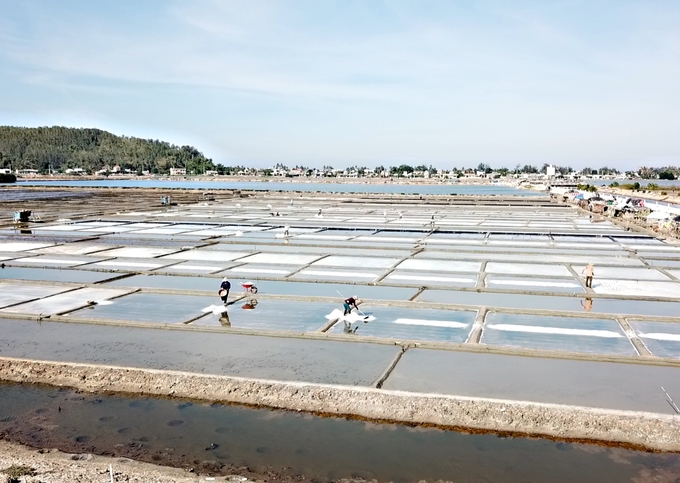
The salt industry in Sa Huynh has gone through many ups and downs. Photo: Vo Thanh Ky.
The worst thing at that time was the destruction of the American and Republic of Vietnam soldiers. Before the salt workers could collect the crystallized salt, they detonated explosives to destroy the dike, causing water from the lagoon to flood and dissolve the salt fields. "They suspected that the people who made salt were supplying the communists. Everyone could only watch the salt fields submerged in water with their eyes filled with hatred", Tran Ngoc Canh (92 years old) recalled the emotional history.
At the age of 87, Duong Thi Dien still remembers the difficult times of salt production. At that time, the enemy often organized sweeping operations and bombarded villages. Many salt workers fell, blood stained the fields, and the sound of mourning and lamentation echoed in the countryside. But because of their livelihood, they still secretly went to the fields in the quiet of the night.
“They searched every nook and cranny. Whenever they saw a house with salt, they questioned us and forced us to sell it immediately. But I still hid it and carried it up to my husband and the others up there. I had to make the trip at night to avoid being discovered by the enemies,” she said.

Le Van Duyet next to a pile of salt melted by floods (photo taken in 2010). Photo: Vo Thanh Ky.
On a spring night three years ago, there was a sudden shout: "The water has overflowed the dike, folks!". Everyone rushed out into the fields, frantically running toward the dike. The tide was rising, and seawater from the Nuoc Man lagoon overflowed the dike surrounding the Sa Huynh salt fields. Everyone hurriedly scooped up salt, put it in bags, and carried it to a high place to avoid flooding.
Nguyen Thanh Ut, the Chairman of the Board of Directors and Director of Salt Cooperative 1 at that time, mobilized men to use bags of soil to build up the dike to prevent water. However, due to the high water level, nearly 100 m of the dike collapsed, washing away over 500 m3 of soil and rock after many days of construction. More than 13 tons of salt piled up and covered with tarpaulin on the dike of 7 households were dissolved in the water. “The damage could have been worse, but luckily the locals were able to collect salt and move it to another place in time,” Ut said.
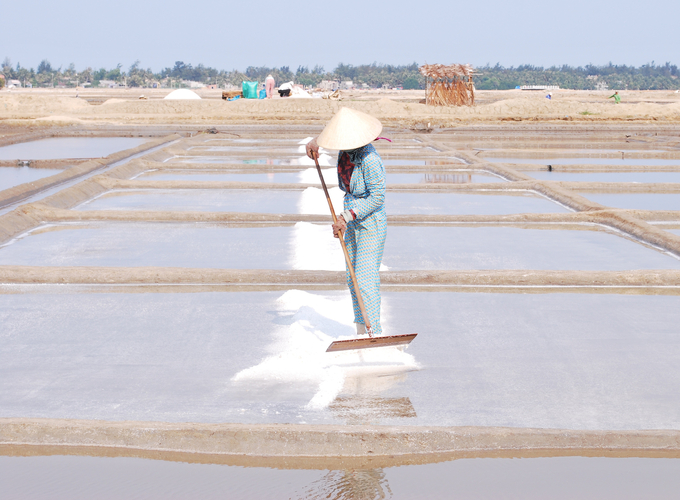
Despite their dedication to their profession, the lives of Sa Huynh salt workers are still very difficult. Photo: Vo Thanh Ky.
On a winter night in 2010, the sky was pitch black. Rain was pouring. Many people were restless because they could not go out in the rain, they could only stare at the dark night and give out a sigh. They were worried that the salt piles, although covered with tarps and carefully protected, would be damaged when flooded. What they feared became true. The rain was heavy from evening to morning and even lasted for many hours after that. Water from the western mountain range poured down onto the fields, overflowed National Highway 1A, dissolved approximately 330 tons of salt and drifted out to sea.
That afternoon, I walked along the road between the village and the salt field and suddenly met Le Van Duyet standing next to the plastic tarps and bamboo poles scattered on the ground. More than 7 tons of salt had been washed out to sea with the water and the same amount of salt was slowly dissolving. Duyet was filled with despair. "The income of the people here mainly comes from salt production. After harvesting, we save it and wait for a high price to sell it to prepare for Tet, but this...".
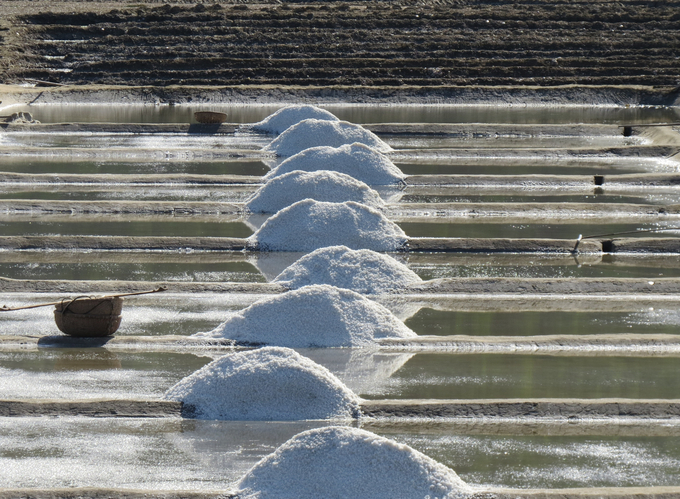
Sa Huynh salt is of high quality, but the market may still underappreciate its value, resulting in salt workers earning low income. More support is needed for development. Photo: Vo Thanh Ky.
Another flood season is approaching. Until now, the salt workers in Sa Huynh have always reminded each other to be careful. All the efforts of the whole season were lost in the floods of those years. Now the salt workers are always on edge every time they hear the flood forecast.
"The local government as well as salt workers hope that projects to upgrade infrastructure and solidify irrigation systems in the Sa Huynh salt field system will be implemented soon. Sa Huynh salt needs to attain more opportunities to develop so that salt workers can feel secure in their profession,” said Nguyen Viet Thanh, Chairman of the People's Committee of Pho Thanh Ward (Duc Pho Town).
Translated by Samuel Pham
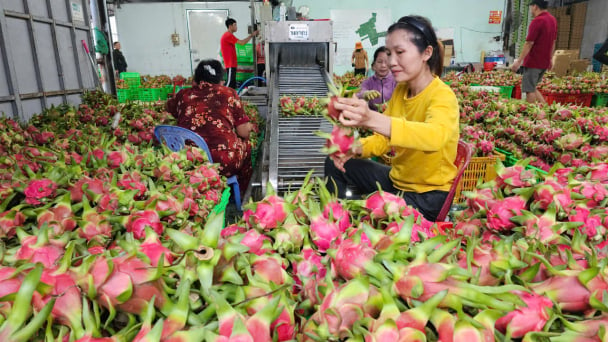
(VAN) According to the Binh Thuan Department of Industry and Trade, in the first five months of 2025, Binh Thuan's dragon fruit export turnover increased by 20.65% compared to the same period last year.
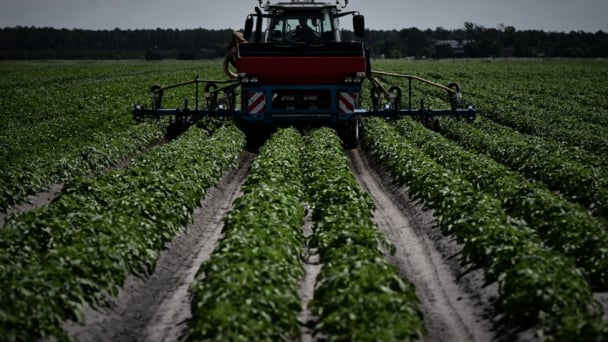
(VAN) EU countries on Thursday gave final approval to new tariffs on fertilizer imports from Russia, a move aimed at cutting off revenue that could support Moscow’s war in Ukraine, despite concerns from European farmers.

(VAN) The working delegation from the Ministry of Agriculture and Environment conducted an important trip to the Netherlands to strengthen strategic partnerships and sustainable development in the agricultural sector.

(VAN) The letter ‘A Plea from the Ocean’ not only evokes emotion but also awakens the human conscience to the responsibility of protecting life on Earth.

(VAN) The Department of Agriculture in South Africa has announced the country’s first mass vaccination of poultry to prevent local birds from contracting avian influenza.

(VAN) Establishment of the Mekong Delta Regional Agricultural Linkage Center, aiming for a closed value chain, deep processing, trading platforms, and international market connectivity.

(VAN) Gia Lai province has recently recorded 460 rare species of animals and plants, contributing to forest conservation and biodiversity planning in the region.